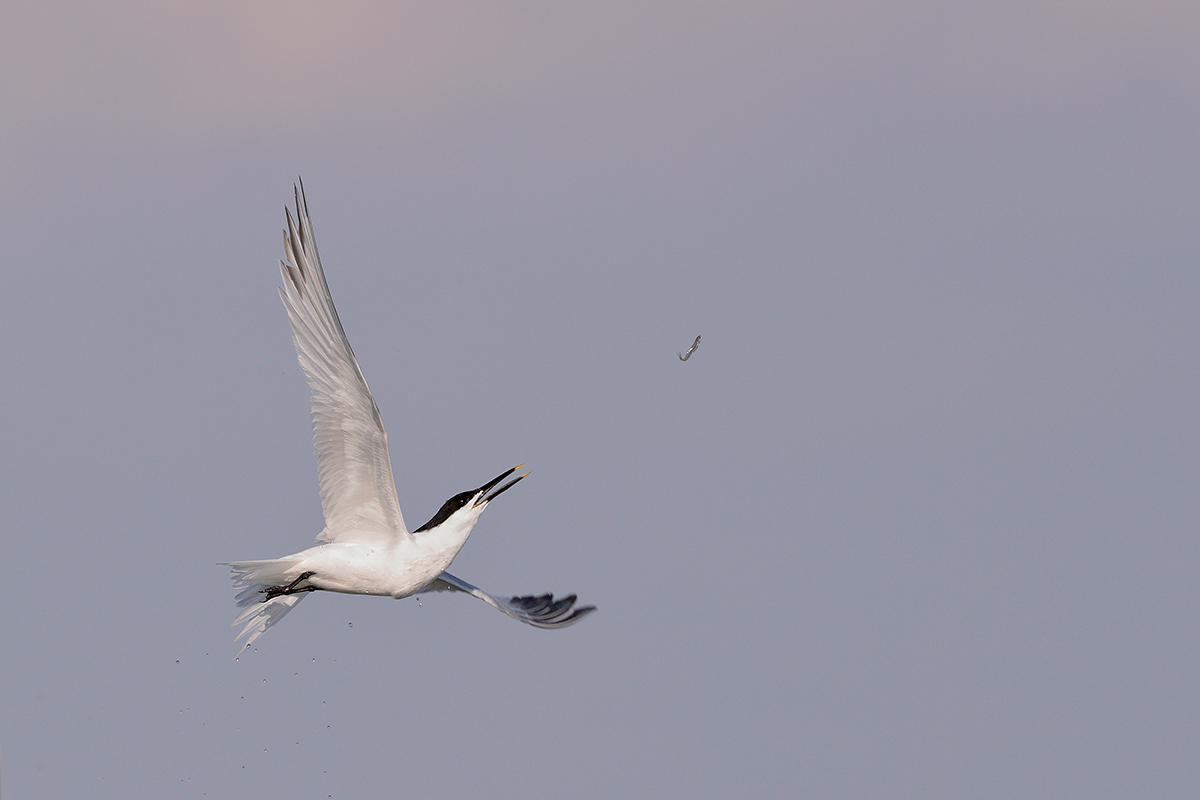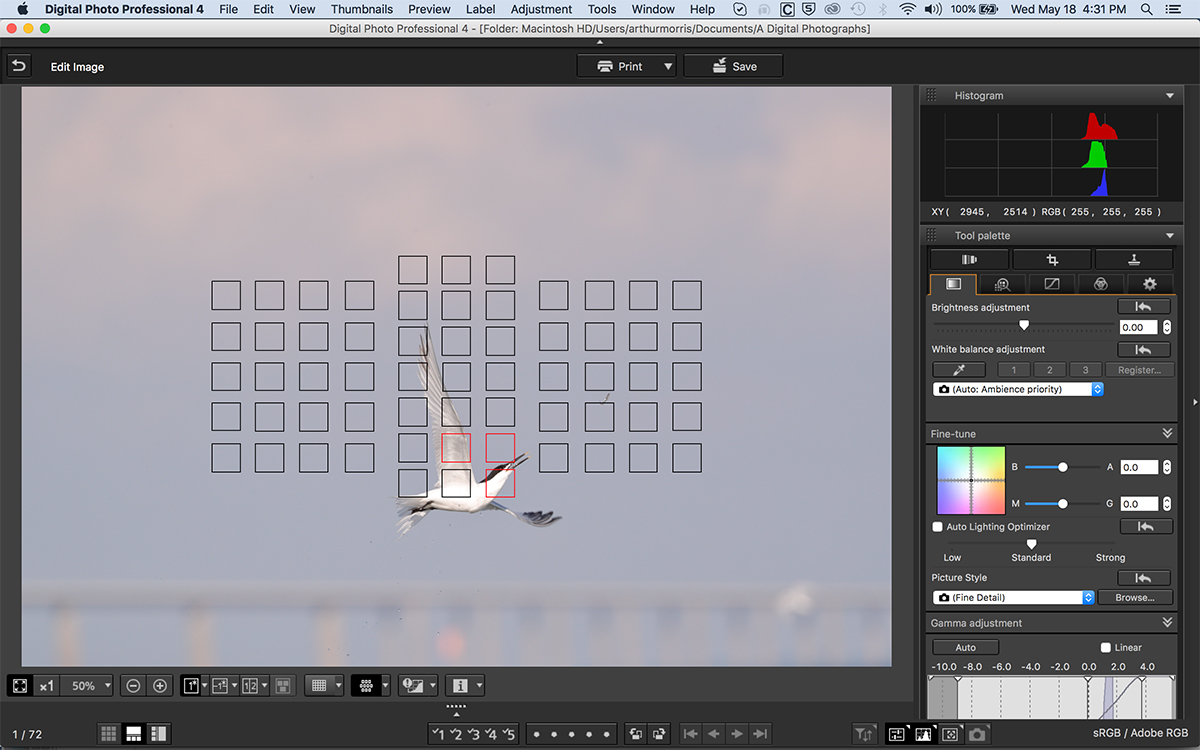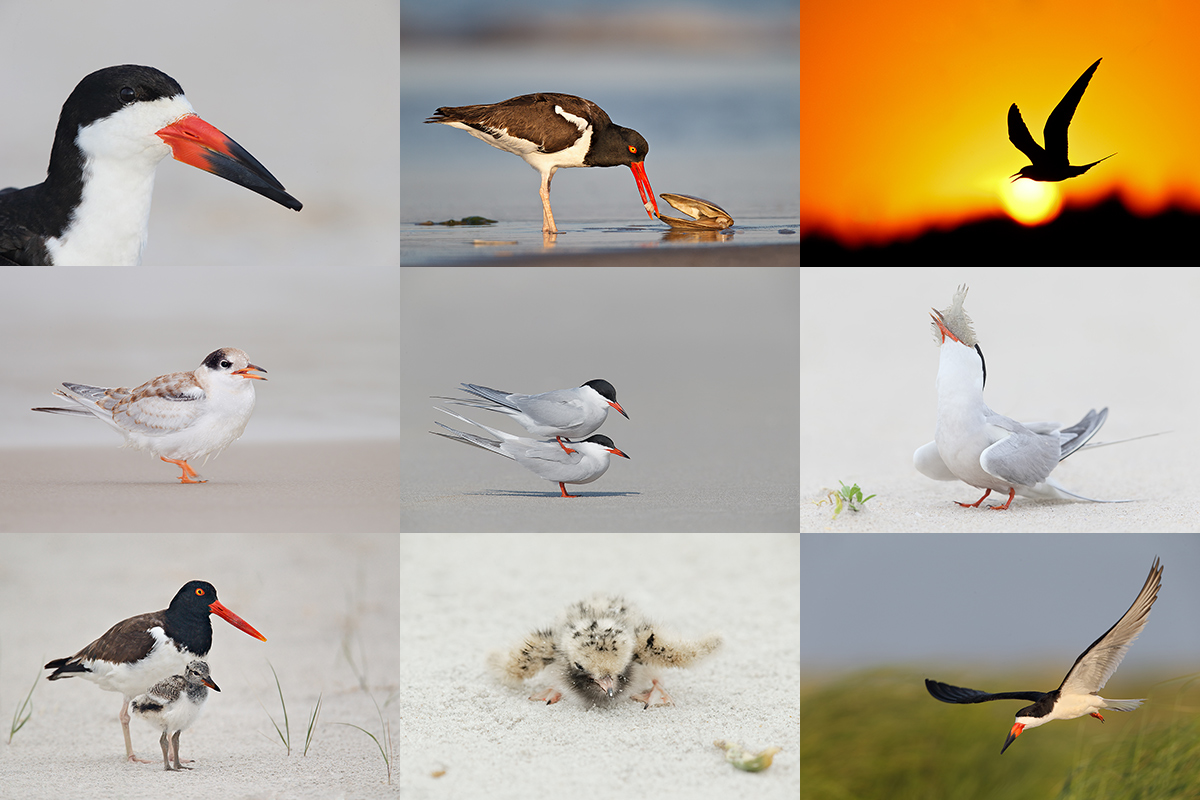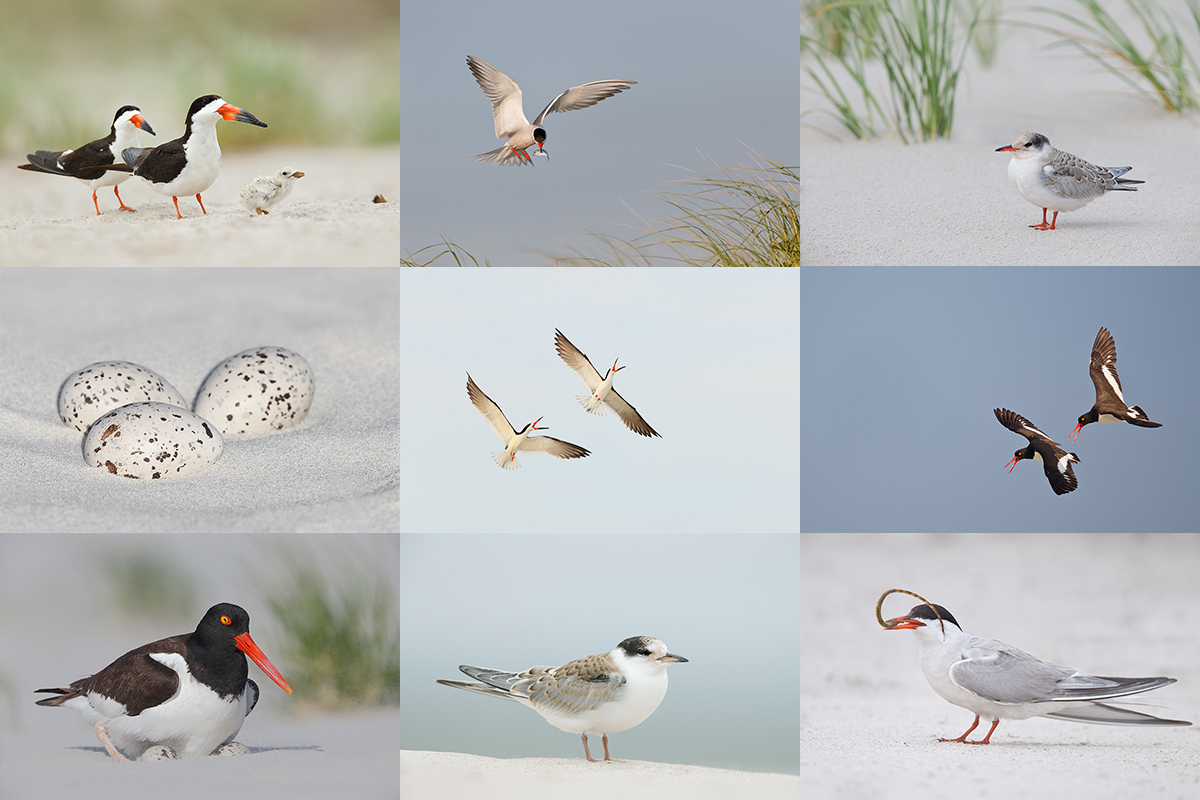What’s Up
I spent most of the day on Wednesday watching re-runs of Chopped while working on my 2015 taxes. Lots more work for the IRS this week.
I enjoyed a nice swim and an early evening ice bath.
The Streak
Today’s blog post marks 195 days in a row with a new educational blog post, dozens of new topics to cover, and no end in sight until my big South America trip next fall. As always-–and folks have been doing a really great job recently–-please remember to use our B&H links for your major gear purchases. For best results use one of our many product-specific links; after clicking on one of those you can continue shopping with all subsequent purchases invisibly tracked to BAA. Your doing so is always greatly appreciated. Please remember: web orders only. Please remember that if you are shopping for items that we carry in the BAA Online Store (as noted in red at the close of this post below) we would appreciate your business.
Selling Your Used Gear Through BIRDS AS ART
Selling your used (or like-new) photo gear through the BAA Blog or via a BAA Online Bulletin is a great idea. We charge only a 5% commission. One of the more popular used gear for sale sites charges a minimum of 20%. Plus assorted fees! Yikes. The minimum item price here is $500 (or less for a $25 fee). If you are interested please e-mail with the words Items for Sale Info Request cut and pasted into the Subject line :). Stuff that is priced fairly–I offer free pricing advice, usually sells in no time flat. In the past few months, we have sold just about everything in sight. Do know that prices on some items like the EOS-1D Mark IV, the old Canon 500mm, the EOS-7D, the original 400mm IS DO lens, and most recently, the 200-400 with Internal Extender, have been dropping steadily. You can see all current listings by clicking here or by clicking on the Used Photo Gear tab on the yellow-orange tab on the left side of the lower menu bar above.
IPT veteran Carolyn Peterson sold her Canon EOS 5D Mark III DSLR camera body in excellent condition for $1,549 in early May.
The sale of Les Greenberg’s Canon EOS Canon 5D Mark III Camera Body is pending.
Price Reductions!
Canon EF 200-400mm f/4L IS Lens with Internal 1.4 Extender
Yet Another Lowest-ever BAA Price!
Price Reduced $700 on May 18, 2016.
KW McCulloch is offering a used Canon EF 200-400mm f/4L IS lens with Internal 1.4X Extender in excellent plus condition: was $8,994, now, $8294. The sale includes the lens trunk, the original leather front lens cover, the rear lens cap, and insured shipping via UPS Ground. Your item will not ship until your check clears or other arrangements are made.
Please contact KW by e-mail or by phone at 361/727-2652 (Central time).
This is the world’s best lens for a trip to Africa. It kills also in the Galapagos and in South Georgia, the Falklands, and Antarctica. And I use mine a lot at Bosque and other dusty places where the built-in TC helps to keep your sensor clean. And I love it in the Palouse for its versatility. The lens sells new at B&H right now for $10,999. You can save a slew of dollars by grabbing KW’s lens now. artie
Canon 300mm f/2.8L IS II Lens
Yet Another Lowest-ever BAA Price!
Price Reduced $400 on May 18, 2016.
Moody McCall is offering a used Canon 300mm F/2.8L IS II in excellent condition: was $4599, now $4199. The sale includes the hard case and key, the nylon front lens cover, the rear cap, the lens strap, a LensCoat, and insured ground shipping via major carrier. Your item will not ship until your check clears unless other arrangements are made.
Please contact Moody by e-mail or by phone at 904 635 4388 (Eastern time).
The 300mm f/2.8L IS II is astoundingly sharp both by itself and with either Series III teleconverter. It is relatively easy to hand hold for most folks and is a truly great flight lens. It makes an ideal everyday super-telephoto for folks who like to go light and those who usually work with tame birds. artie
New Listings
Canon EOS-1DX Professional Digital Camera Body
Multiple IPT veteran Larry Master is offering a near-mint condition Canon EOS-1DX for only $2899. The sale includes the LP-E4N battery, the battery charger, the front cap, the original box, and insured ground shipping via major courier. Your item will not ship until your check clears unless other arrangements are made.
Interested folks may contact Larry on his cell phone at 518-645-1545 or via e-mail.
I used, depended on, and loved my two 1DX bodies since their release several years ago. artie
Canon EOS-1DX Professional Digital Camera Body
IPT veteran Billy Wingfield is offering a Canon EOS-1DX in excellent plus condition but for a 3/4″ scratch on the rear LCD for only $2799. The sale includes two LP-E4N batteries, the battery charger, the front cap, the Canon strap, the original box, and insured ground shipping via major courier. Your item will not ship until your check clears unless other arrangements are made.
Interested folks may contact Billy by phone at 843-729-6670 or via e-mail.
I used, depended on, and loved my two 1DX bodies since their release several years ago. artie
|
This image was created by Machine-gun Mike Hankes on the next-to-last afternoon of the Fort DeSoto IPT with the hand held Canon EF 100-400mm f/4.5-5.6L IS II USM lens, the Canon Extender EF 1.4X III (at 560mm) and the Canon EOS-1D X Mark II with Premium Kit: 64GB Card and Reader. ISO 1000: 1/2500 sec. at f/8 (was a significant over-exposure; see the DPP 4 screen capture below to learn a ton about properly exposing for bright WHITEs in full sun…) 65-point Automatic selection)/AI Servo Expand/Shutter Button AF as originally framed framed was active at the moment of exposure. The system activated three AF points that fell perfectly on the bird’s face and the near wing. As you can see in the DPP 4 screen capture below, This is a very large crop.) Click on the image to see a larger version. AF Micro-adjustment via LensAlign/Focus Tune: +6. Tutorial coming soon. Sandwich Tern tossing tiny baitfish
|
Machine-gun Mike’s Best Shot
Curious as to whether Mike was shooting blanks with his rapid-fire style I asked him to shoot me three of his best Sandwich Tern flight images. He did, while letting me know that he had had time only to scratch the surface of the thousands of images that he made. Today’s featured image was my favorite of the three. It was obvious that Mike’s image optimization skills were somewhat lacking and still curious, I asked him to shoot me the RAW file. He did. Though the JPEG that he had sent was a huge crop, the image quality had held up fairly well. I converted the image in DPP 4, executed a less drastic crop, and did lots of work on the face and bill. I eliminated a stack of specular highlights near the base of the bill, darkened the bill, and sharpened the face and bill. He loved what I did with his image.
Mike’s Post-IPT Comments Via e-mail
MGMH: I’ve been into photography for about 5 years now. I started with wildlife but moved to portraits for several years. I just got back into wildlife and birding primarily about 6 months ago. My Grandfather Randy has been on about the same timeline. I’m not sure how I’d describe myself, maybe intermediate. I really really enjoyed the IPT and definitely would like to join you on future trips. You’ve definitely helped me think different in how I approach bird photography.
AM: In what ways?
MGMH: Paying attention to light angle for sure is now stuck in my head in a good way. And making sure the histogram is well to the right. Though not as much as in the fish tossing image 🙂 Not being afraid to get down and dirty. I think some of my best photos come from crawling in the mud and approaching the birds slow and low. The angle of the bird’s body in relation to the sensor. And head angle. I am definitely paying more attention to those.
Thanks! Mike
The DPP 4 Screen Capture |
Lessons from the DPP 4 Screen Capture
In this DPP 4 screen capture, you can see the large crop. And you can see how nicely 65-point Automatic Selection AF worked. What is misleading, however, is a quick peek at the histogram; it give the impression that the image is a pretty good exposure, if anything, perhaps a bit under-exposed. As it turns out, this is a great example of what I call “the lying histogram.”
Take a close look at the RGB values. With the eyedropper on the brightest WHITEs on the bird’s neck, the RGB values read R=255, G=255, B=255. Over-exposed. Still curious, I copied the RAW file to a card and put the card into my 1DX Mark II. The image showed blinkies (highlight alerts) on the whole side of the bird. The Luminosity histogram showed the clipping but the RGB histogram did not. Mystery solved: Mike blew the exposure.
To try and save the image I reduced the exposure one-half stop via the Brightness Slider and moved the highlight slider to -2. In Photoshop the flanks showed a severe lack of detail. And that was putting it mildly. I continued with some NIK Detail Extractor and a Linear Burn but the brightest WHITEs were still without detail. As a last resort, I painted those in with a 30% opacity brush using properly exposed WHITEs as the source. The resulting image was more than passable but less than ideal.
I often see the lying histogram in the field; the histogram looks fine but a close look at the image reveals blinkies. Regular readers know that I have long advised that they make sure that the right side of the Luminosity histogram not come anywhere near the right-hand axis; this will ensure that your brightest WHITEs come into Photoshop with RGB values in the mid-230s, just where I want them. Some prefer their WHITEs to have RGB values in the mid-240s. Either way, you do not need to jump through hoops to reveal the detail in the WHITEs. With WHITE RGB values in the 250s, you make your life very difficult.
The most important lessons: be sure to check for blinkies when working in changing light and always avoid blinkies on the subject.
And another: being more selective and waiting for subjects in flight to get closer will result in more pixels on the bird and much better image quality… That comes with experience.
The 1D X II
If what you read here on the blog today and recently inspires you to purchase a Canon EOS-1D X Mark II DSLR Camera Premium Kit with 64GB Card and Reader please use the active link or click on the logo-link above. Doing so will be greatly appreciated. Many who used our link right off the bat already have their 1DX Mark IIs.
IPT Similarities
The Fort DeSoto and the Nickerson Beach IPTs have a lot in common. Lots of birds, lots of sand, and lots of learning. The big difference is that there are lots more flight opportunities at Nickerson: hovering terns, birds landing at the nest, and with luck and the right morning winds, skimmers skimming.
|
From upper left clockwise to center: Black Skimmer head portrait, American Oystercatcher dining on surf clam flesh, Common Tern at sunset, Common Tern adult swallowing flatfish, Black Skimmer in flight, newborn Common Tern chick, American Oystercatcher with chick, fresh juvenile Common Tern (with fill flash), and Common Terns copulating. |
Nickerson Beach Terns/Skimmers/Oystercatchers Instructional Photo-Tour (IPT): July 18-22, 2016. 4 1/2 DAYS: $1899. Limit 10/Openings 8.
Meet and greet at 3pm on the afternoon of Monday, July 18. Limit 10.
The primary subject species of this IPT will be the nesting Common Terns. The trip is timed so that we will get to photograph tiny chicks as well as fledglings. There will be lots of flight photography including adults flying with baitfish. Creating great images of the chicks being fed is a huge challenge. In addition to the terns we will get to photograph lots of Black Skimmers courting, setting up their nesting territories, and in flight (both singles and large pre-dawn flocks blasting off). Midair battles are guaranteed on sunny afternoons. And with luck, we might even see a few tiny chicks toward the end of the trip. We will also get to photograph the life cycle of American Oystercatcher. This will likely include nests with eggs and tiny chicks, young being fed, and possibly a few fledglings.
Nesting Piping Plover is also possibly. There will be lots of gulls to photograph; most years I am able to find a few Lesser Black-backed Gulls of varying ages in addition to the Herring, Ring-billed, and Great Black-backed Gulls. You will learn to identify and age the various gull species. There will likely be some Willets feeding along the surf and with luck we might get to photograph a handsome juvenile or two. In addition to the locally breeding shorebirds, we will likely get to see some southbound migrant arctic-and sub-arctic breeding shorebird species such as Sanderling, Semipalmated Plover, and maybe even Red Knot.
|
From upper left clockwise to center: Black Skimmers with tiny chick, Common Tern landing with baitfish for young, fledged Common Tern chick in dunes, American Oystercatchers/display flight, adult Common Tern with pipefish for chick, Common Tern fledgling in soft light, American Oystercatcher on nest with eggs, American Oystercatcher 3-egg clutch, battling Black Skimmers. |
The IPT Logistics
The tour will begin with a meet and greet on the afternoon of Monday, July 18, 2016. That will be followed by our first shooting session at the beach. From Tuesday through and including all of Friday we will have two photography sessions daily. Our morning sessions will start very early so that we are on the beach well before sunrise. We usually photograph for about four hours. Then we will enjoy a group brunch. We will always have a midday break that will include a nap for me. That followed by our daily afternoon classroom sessions that will include image review, workflow and Photoshop, and a review/critique of five of your trip images. Folks are always invited to bring their laptops to brunch for image sharing. I always have mine with me but heck, I am a big show-off. Afternoon in-the-field sessions generally run from 5pm through sunset.
Breakfasts are grab what you can. Four brunches are included. Dinners (if at all) will be on your own as we will often get back to the hotel at about 9pm. There is a fridge in every room and a supermarket within walking distance of the hotel so nobody should starve. You will learn a ton during the nine shooting sessions, the four in-classroom sessions, and even at lunch. Early morning and late afternoon parking is free. If we want to head back to the beach early we will need to arrange tight carpools and share the $30/vehicle parking fee. Non-photographer spouses, friends, or companions are welcome for $100/day, $450 for the whole IPT.
Save a space by calling Jim or Jen at the office at 863-692-0906 and arranging to leave your deposit of $599–credit cards are accepted for deposits only. Your balance will be due on April 18, 2016. I hope that you can join me for what will be an exciting and educational IPT.
Please Remember to use our Affiliate Links 🙂
To show your appreciation for my continuing efforts here, we ask, as always, that you get in the habit of using my B&H affiliate links on the right side of the blog for all of your photo and electronics purchases. Please check the availability of all photographic accessories in the BIRDS AS ART Online Store, especially the Mongoose M3.6 tripod heads, Induro tripods and ballheads, Wimberley heads and plates, LensCoats and accessories, and the like. We sell only what I have used, have tested, and can depend on. We will not sell you junk. We know what you need to make creating great images easy and fun. And we are always glad to answer your gear questions via e-mail.
I would of course appreciate your using our B&H affiliate links for all of your major gear, video, and electronic purchases. For the photographic stuff mentioned in the paragraph above we, meaning BAA, would of course greatly appreciate your business. Here is a huge thank you to the many who have been using our links on a regular basis and visiting the BAA Online store as well.
I would of course appreciate your using our B&H affiliate links for all of your major gear, video, and electronic purchases. For the photographic stuff mentioned in the paragraph above we, meaning BAA, would of course greatly appreciate your business. Here is a huge thank you to the many who have been using our links on a regular basis and visiting the BAA Online store as well.
Be sure to like and follow BAA on Facebook by clicking on the logo link upper right. Tanks a stack!
Typos
In all blog posts and Bulletins, feel free to e-mail or to leave a comment regarding any typos or errors. Just be right 🙂


















Hi Artie I would be happy to have a go at the raw file _ I think you have my email address.
It is on its way via Hightail. a
I would echo MGMH s comments about paying more attention to body and head angle, exposure, getting down and dirty etc.
Reading the blog has been a huge help in improving skills and its shows .
Hanging out here one cannot help but learn.
thanks Mike for sharing your images
Thanks Artie for your excellent instruction on how to make those images even better.
David
Thanks David, I can hardly wait to meet you and Kent on the South Georgia trip 🙂
a
I like the idea of a thread about what we have learned from you. In my case, it is mostly from reading nearly all of your guides. Mike’s comments definitely resonated with me. I now pay attention always to the sun angle and where my shadow is pointing. I never realized how important head angle was. I now know why some of my shots are better than others because of subtle differences in head angle. I would add that I also learned that exposure is about the light hitting the subject, not the subject. This was really hard to learn, but I now know that a black bird and a white bird in the same light require basically the same exposure. I am now really trying to master manual exposure using your guides because I have had lots of shots ruined by changes in the background affecting the automatic exposure meter. Thanks again for sharing all this with us.
Mike. Thanks. All excellent but for this: “But I now know that a black bird and a white bird in the same light require basically the same exposure.”
Black birds in the same light as a white bird need about 1 2/3 stops more light to be properly exposed…
You need to get a copy of the original “The Art of Bird Photography” here, study the chapter on Making Good Exposures, and especially the section on Applied Exposure Theory (pages 58-63). All good photographers should master this material and the diagram on page 62.
artie
ps: you should join me on an IPT 🙂
Good work on the tern, I do however get the impression there is a sharpening halo along the upper surface of the neck and head.
As a general rule of thumb I found that up to 1 stop overexposure is readily recoverable with DPP after that a double conversion or other tactics are required. I guess different sensors will give differing results.
There is a halo as you mention. Likely because I used my standard JPEG sharpening on a big crop.
With the entire side of the bird flashing, you might have trouble saving the WHITEs. I’d be glad to send you the RAW file.
a
I assume Billy’s 1D-X camera is a bit cheaper than currently priced at $7899 ?
Cheers, Willy
Thanks for catching my typo: $2799 is now correct. a